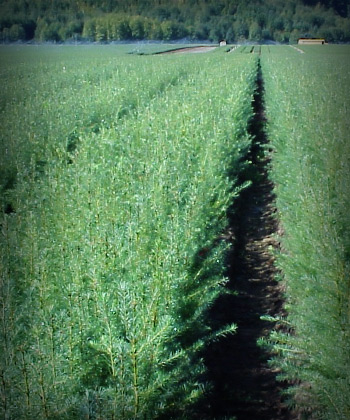Planting, Harvesting and Replanting the Next Forests
Initially, when settlers moved into Washington, replanting trees was uncommon. Trees were cut to clear the land and the logs were sold for cash. The amount of forest seemed limitless. During the 1930s, tax policy changed to encourage tree farming, shifting away from the practice of cutting all the trees and selling off or leaving the land. Timber companies held onto their land with the hope that second-growth would renew the resource. The first tree farm in the country was established in 1941 in Montesano, WA by Weyerhaeuser Company. Now, we are no longer harvesting native forests as the settlers did.
Private forest landowners are committed to the future and are harvesting and managing second and even third growth forests that they planted. Long ago, forestry practices changed. For example, clearcut size is regulated by law and limited to 120 acres without a special review. In Washington, the average clearcut is less than 47 acres. Along with clearcut size, other harvesting practices have changed. Once you harvest a unit, the Forest Practices Act of 1946 requires the trees to be replanted within three years, although on average, private landowners replant within 12-18 months. ![]()

Seedling nursery. By planting a seedling in the ground, private forest landowners are making a commitment to the future of forestry in Washington State.
